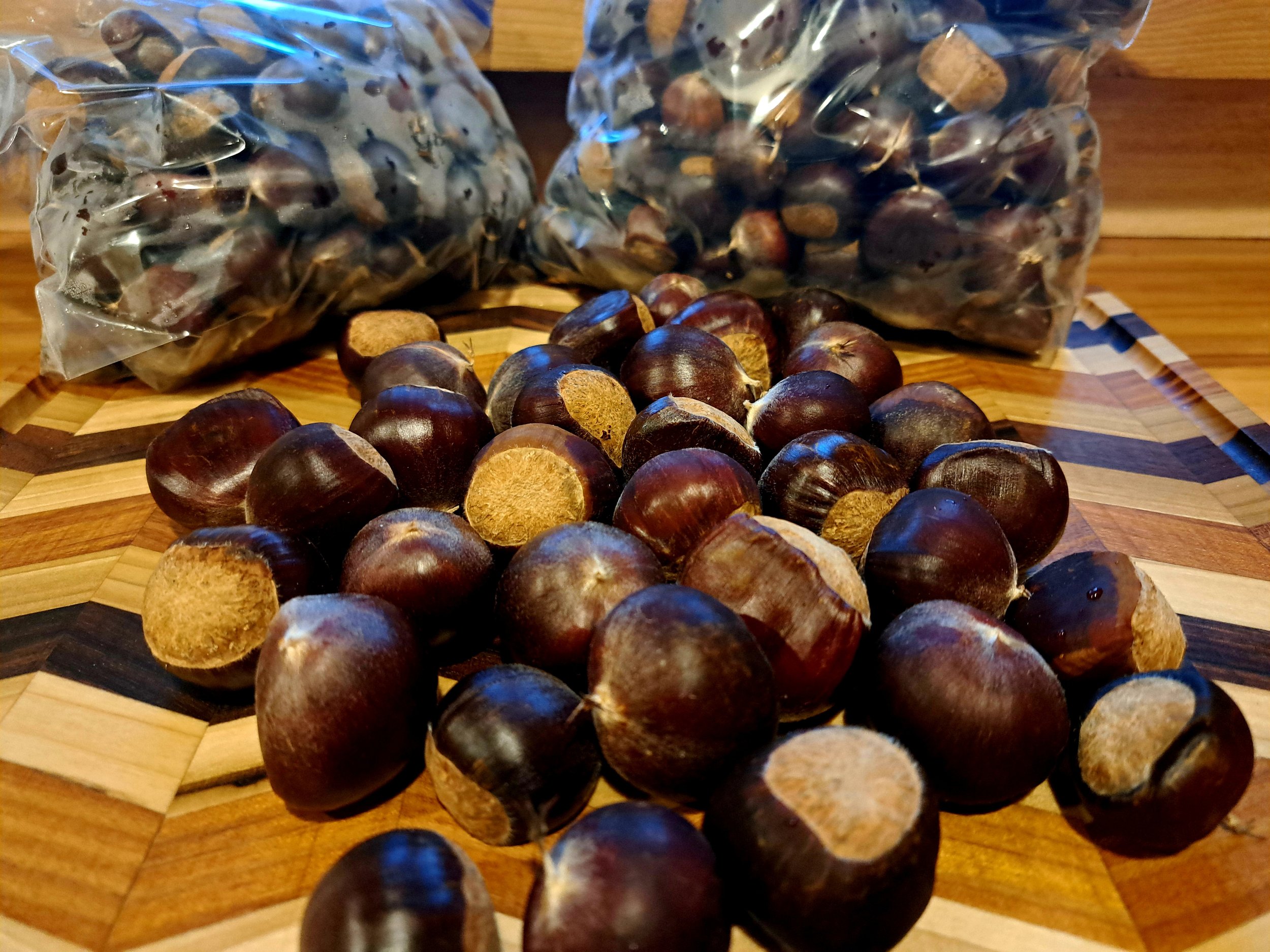The Dunstan Chestnut (Castanea dentata x mollissima) is a hybrid chestnut variety known for its resilience against the chestnut blight that devastated native American chestnuts in the 20th century. This cross between the American and Chinese chestnut combines the large stature and nut quality of the American chestnut with the blight resistance of the Chinese variety. The Dunstan Chestnut can thrive across a wide range of environments in the U.S., from USDA Hardiness Zones 5 to 9, making it suitable for both northern and southern climates.
Dunstan Chestnuts are valued for their fast-growing nature and rapid nut production, which typically begins at 3 to 5 years of age. These trees are heavy producers, with mature trees yielding up to 50–100 pounds of nuts annually. The nuts are sweet, low in tannins, and versatile in culinary applications, often compared to grains for their starchiness and used in flours and various recipes. The tree itself can reach heights of 40 to 60 feet with a spread of 30 to 40 feet, preferring full sun and well-drained soils with a slightly acidic pH between 5.5 and 6.5.
Planting requirements include ensuring adequate pollination by planting at least two trees, although three or more is recommended for optimal yield. Dunstan Chestnuts are particularly popular among wildlife enthusiasts for attracting deer and other animals, as well as for sustainable agriculture due to their consistent annual nut production without alternating yields (a trait seen in oak trees). For best results, they should be planted on slopes with good air and water drainage to avoid frost pockets and ensure successful nut ripening, which requires at least 300 chill hours per year.
These trees are now widely planted in orchards and backyard landscapes, reintroducing chestnuts to American agriculture and food markets while supporting ecosystem restoration goals in areas impacted by chestnut blight.








